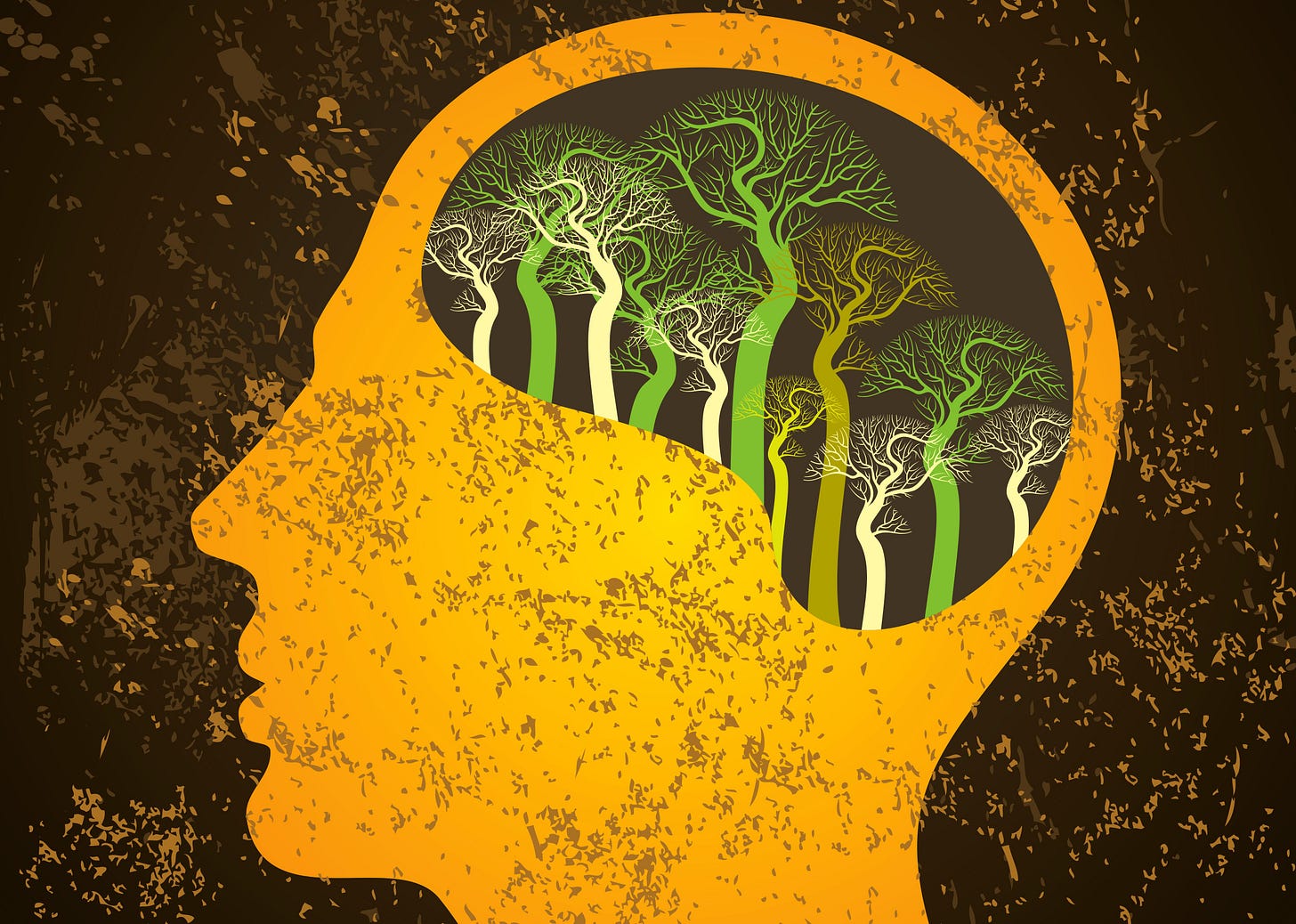Why Logic Fails: How to Communicate Climate Solutions in a World Run by Emotions
We humans like to think we're rational. We're not.
Decisions are almost never made with the logical, conscious mind alone. Emotions, biases, instincts — these hidden forces are calling the shots more often than we’d like to admit.
This misunderstanding (a.k.a. delusion) has been a major Achilles’ heel for the climate movement.
While sustainability advocates are busy making fact-based, rational arguments or ethical appeals for saving the planet, extractive capitalism keeps pulling off the same emotional heist it has been for decades.
It's a well-oiled messaging machine designed to feed our habits of instant gratification and keep us hooked on the status quo.
And let’s be honest: the status quo is comfortable for a lot of us, if only because it’s familiar. It’s the world we know, and it’s engineered to feel good — at some level, at least in the short term. Who can resist the dopamine hit of flash sales of crap we don’t need, with fancy (excessive) packaging and same-day delivery?
Even those of us who know better may find ourselves leaving the lights on, buying the disposable version, or driving when we could bike.
If we want to tackle the climate crisis, we need to stop pretending logic alone will win hearts and minds, change behavior, or catalyze systemic change.
It’s time to look under the hood and understand the unconscious drivers of human behavior. They’re the key to creating messages and movements that truly resonate — and that might just save our future.
The Hidden Forces Behind Every Decision
“The heart has its reasons which reason knows nothing of...”
― Blaise Pascal, Pensées
The truth is, logic doesn’t stand a chance against emotion, let alone against the primal drives pulling levers deep in the dark, primitive recesses of our brains.
The unconscious mind is in the driver’s seat, making as much as 95% of our decisions, while the conscious mind is in the back, cutely narrating the trip like it was calling the shots all along.
This isn’t just about what we buy. It’s how we choose leaders, careers, even our daily habits. As behavioral economist Dan Ariely shared in his bestselling book Predictably Irrational:
“Whether we are acting as consumers, businesspeople, or policy makers, understanding how we are predictably irrational provides a starting point for improving our decision making and changing the way we live for the better.”
Want proof? Using fMRI technology to watch real-time neural activity, researchers have shown that our brains make decisions long before we consciously realize it.
In one study, scientists could predict which button participants would press up to seven seconds before they were aware of making the choice. Seven seconds might not sound like much, but the implications are massive — it shows our instincts and emotions are working behind the scenes, driving our behavior without consulting “us” first.
This impacts how we respond to advertising and marketing. Another study found that certain brain activity predicted the success of ad campaigns better than surveys or self-reports. Ads that tapped into their audience’s unconscious motivations were more effective — even when people couldn’t articulate why they were drawn to them.
The upshot: what people think they like doesn’t always match how their brain reacts — or what they end up choosing.
It’s not that facts don’t matter — they do — but facts alone won’t overcome the powerful emotional pull of habits, comfort, or fear of change.
For the climate movement, this means crafting messages that resonate emotionally and instinctively.
But sustainability advocates often impose (their own) logic.
What I’ve seen in both activist and business communications is that messaging often misses the mark: it’s too complex, too self-righteous, or too disconnected from what people actually care about.
I recently spoke with climate investor Hampus Jakobsson, General Partner at climate tech VC firm Pale Blue Dot, about this disconnect. There’s a perfectly logical case for all of us doing everything possible to tackle the climate crisis — but hammering people with data or moral imperatives often backfires.
“A lot of times,” Jakobsson shared, “we see climate folks trying to force-feed people something they’re never going to relate to: ‘You need to save the planet. Everything’s going to shit. Look at the science. You need to do an ESG report. You can’t eat meat, or fly.’ And then people just get checked out: ‘When is this asshole gonna leave the room?’”
The key, Jakobsson suggests, is to meet people where they are. “You could instead come in and say, ‘Hey, you can become the most efficient company: use all your scrap, recycle internally, take pressure off your supply chain, and increase your margins.’ That’s something they can actually get excited about.”
As an investor, Jakobsson sees similar issues with founders: too much irrelevant information and not enough understanding of their audience (himself and other VC’s).
“When we first chat with founders, we're trying to figure out, do they understand our job? If their first email is four pages long, or they send a deck that looks like a PhD thesis, then they don’t understand the situation we’re in, and it’s hard to get excited, even if the idea might have high value.”
So how can we communicate better? Engage the subconscious mind.
If we want to inspire action — whether it’s adopting sustainable practices or backing ambitious climate policies — we need to speak to the deeper parts of the brain that actually drive decisions. Here’s how.
1. Uncover the Unconscious Motivators of Your Audience
To connect with people at a deeper level, we first need to understand what makes them tick.
Take the time to connect
Don’t assume your audience shares your knowledge or perspective — start where they are.
Jakobsson shared an example from his time as an angel investor. A founder began an investment conversation with the absolute basics, hand drawing on a piece of paper: “This is a cell.”
From there, he quickly but thoroughly built up his story, step by step, explaining both the technology and the business case behind his health tech startup. Within 25 minutes, he ensured Jakobsson understood every piece of the puzzle, earning his trust — and ultimately, funding.
If you don’t already know your audience at a deep level, engage in one-one conversations and ask open-ended questions about their values, priorities, and experiences. For example, do they describe sustainability as a “responsibility,” a “sacrifice,” or an “opportunity”? Pay attention to the metaphors they use, as these often reveal subconscious beliefs.
Study Behavior, Not Just Words
Cross-check what people say with how they act. Behavioral data, like purchasing habits or online activity, can reveal motivators they may not even recognize themselves. Access public market data from sources like Statista, the Pew Research Center, and GWI.
You can also collect your own data. A/B testing, which compares two versions of a message or design to see which performs better, is a powerful approach for this. Platforms like Optimizely or HubSpot make it easy to run these experiments and refine your approach, whether in B2C marketing or B2B lead gen.
Tap Into Identity and Social Norms
Find out who your audience is by analyzing the language and symbols that resonate with them. Study the influencers they follow and pay attention to the messages that elicit the strongest responses.
Similarly, observe what your audience shares online to uncover their aspirations, social priorities, and the narratives that matter most to them.
For example, the Toyota Prius became a status symbol for eco-conscious individuals in the early 2000s because its unique design signaled “green” identity to others. It wasn’t just a car; it was a statement. Today’s EV market tells a different story: brands like Tesla appeal not only to environmental values but also to tech-savvy, innovation-driven identities.
2. Use Strategic Storytelling and Marketing Techniques
Once you understand your audience’s subconscious drivers, craft messaging that connects emotionally and instinctively.
Simplify and Engage
People connect with big, relatable ideas. Neuromarketing expert Roger Dooley wrote, “In the 2016 [presidential] campaign, Hillary Clinton had a detailed, nine-point plan to solve the immigration crisis. In stark contrast, Trump promised to, ‘Build a wall. A big, beautiful wall.’ People intuitively grasp the idea of a big wall stopping illegal border crossings, regardless of its feasibility.”
Trump’s “Build a wall” slogan worked because it was simple, visual, and emotional. Climate messaging should aim for the same clarity and resonance. For example, instead of complex statistics about carbon sequestration, try: “Cleaner air means healthier kids.”
Focus on “What’s in it for me?”
Show people the tangible benefits of change. As Jakobsson pointed out, talking about “recycling internally to increase margins” is far more engaging than a lecture on corporate responsibility.
Considering the Prius v. EV example above, if data shows your audience prioritizes cutting-edge technology or social status, position your EV messaging to reflect those aspirations — highlighting sleek design, advanced features, or the cachet of driving the future. And if it shows cost as a main barrier, messaging should emphasize long-term savings or tax benefits.
Leverage Identity and Belonging
Build shared purpose by appealing to group identity. This is such a powerful concept, it inspired one of the world’s foremost persuasion experts to add it to his definitive list of essential principles after almost 20 years. Robert Cialdini, author best-selling classic Influence, added “Unity” in his later book Pre-suasion after realizing the power of creating an “us” that people want to belong to.
For example, campaigns that position sustainability as patriotic (“American-made clean energy”) or innovative (“Be at the forefront of building the future”) can be far more compelling than messages about doing the right thing or solving a crisis.
Know When to Use Data and Logic
While we’ve been focusing on the power of emotional connection, logic has its place as well. For example, it’s often important deeper into a decision-making process, where details matter.
And again, it depends on your audience. For example, one study found emotional messaging often resonates even more with older audiences than with younger adults. And technical professionals like engineers often desire technical information (which connects to their identity and hence their emotions).
By understanding your audience’s unconscious motivators and speaking to their emotions and instincts, you can craft messages that resonate more deeply, inspiring real action for both business success and the planet’s future.
Call to Action: The Role of Business Leaders and Professionals
What we need now are the stories that will make people act on climate solutions. The way forward depends on leaders and professionals like you reimagining how we engage hearts, minds, and instincts.
Whether you’re leading a company, managing a team, or building a career in sustainability, you have a platform to influence not just your customers and colleagues, but your industry and the world.
So here’s the challenge: think beyond products, profits, and projects. Consider how you can be a cultural influencer in your sphere of impact, shifting the tide of public perception and action.
By reshaping how you communicate — focusing on unconscious motivators like identity and hidden beliefs — you can create momentum for real and lasting change.
Editor credit: Kate Bubacz




